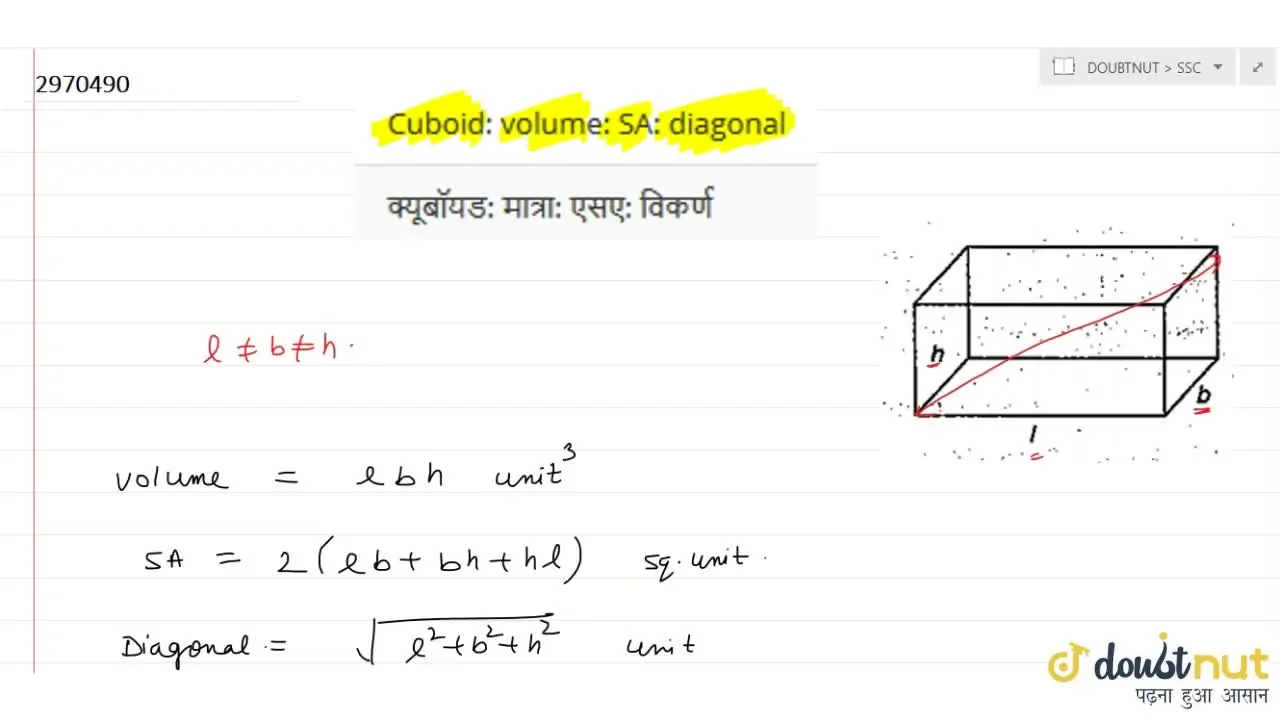Cuboid: volume: SA: diagonal
Cuboid: Volume: SA: diagonal
What is Cuboid?
A cuboid is a 3-dimensional figure that has six rectangular plane faces. Here, you can take an example such as a matchbox or a brick. You would find that six plane faces happen to be rectangular. It should also be noted that since a square is a special case of a rectangle, there may be square faces in a cuboid.
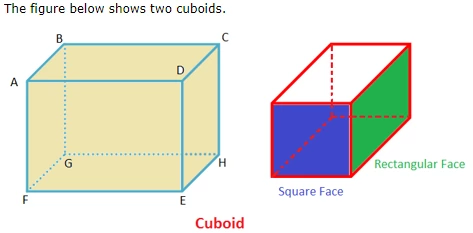
Consider the cuboid on the left. It has
1. Six rectangular faces, namely ABCD, EFGH, ABGF, CDEH, ADEF and BGHC. Its opposite faces are congruent.
2. Twelve edges, namely AB, BC, CD, DA, FG, HE, EF, AF, BG, CH and DE. The edges AB, CD, FG, EH are equal; the edges BC, AD, GH, EF are equal; the edges AF, BG, CH, DE are equal.
3. Eight Corners (or vertices), namely A, B, C, D, E, F, G and H.
4. Three dimensions: Length (l) = FE, breadth (b) = FG and height (h) = AF.
5. Four diagonals, namely AH, FC, BE and GD which are all equal. These are line segments joining opposite corners (not on the same face).
Note: The dimensions of a cuboid are a cm × b cm × c cm means the length = a cm, breadth = b cm and height = c cm.
Volume of a Cuboid (V) = l × b × h
Total surface Are of a Cuboid (S) = 2(lb + bh +hl)
Diagonal a Cuboid (d) = l2+b2+h2
Where l = Length, b = breadth and h = height.
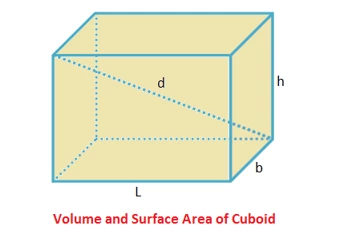
Area of the Four Walls of a Room (Lateral Surface Area of a Cuboid)
Rooms area (examples of cuboids)
Area of the four walls of a room = sum of the four vertical (or lateral) faces
= 2( l + b)h
Where l = Length, b = breadth and h = height.
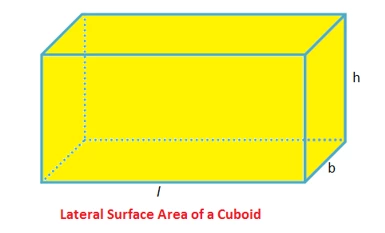
Volume of Cube = a³, a is the length of each side of the cube.
For instance, the volume of the cube of side 2 cm will be equal to 2 cm × 2 cm × 2 cm = 8 cm³.
If you multiply a number by itself three times, then this is known as the cube number which you would get in the result. For example, 4 × 4 ×4 = 64. 64 is a cube number. Let’s have a look at the list of cubes of the first ten natural numbers. This would prove to be of much use to you in the best manner.
Cubes of the first 10 Natural Numbers
1³= 1
2³ = 8
3³ = 27
4³ = 64
5³ = 125
6³ = 216
7³ = 343
8³ = 512
9³ = 729
10³ = 1000
A perfect cube is the numerical value which is obtained after cubing any given number. Well, it is very important to know the properties of cube numbers that would truly help you a lot to calculate the volume of a cube.
Related Videos:
Properties of Cube Number
- When it comes to the cubes of positive numbers, you should remember that they are always positive. For example, cube of +4 is = (+4) × (+4) × (+4) = +64
- Cubes of negative numbers are always negative. For example, cube of -4 is = (-4) × (-4) × (-4) = -64
- Cubes of even numbers are always even.
- Cubes of odd numbers are always odd.
Problems on Volume and Surface Area of Cuboid:
1. A cuboid has three mutually perpendicular edges measuring 5 cm, 4 cm and 3 cm. Find (i) its volume, (ii) its surface area, and (iii) the length of the diagonal.
Solution: Three mutually perpendicular edges are the length, breadth and height.
Length = l = 5 cm, breadth = b = 4 cm, height = h = 3 cm.

Therefore,
(i) Volume = l × b × h = 5 × 4 × 3 cm3 = 60 cm3;
(ii) Surface area = 2(lb + bh + hl)
= 2(5 × 4 + 4 × 3 + 3 × 5) cm2
= 2(20 + 12 + 15) cm2
= 94 cm2;
(iii) Length of a diagonal
= l2+b2+h2
= √52+42+32 cm
= √50cm
= 5√2 cm.
2. The length, breadth and volume of a cuboid are 8 cm, 6 cm and 192 cm3 respectively. Find its (i) height, (ii) surface area, and (iii) lateral surface area.
Solution:
Let the height = h.
Then, volume = l × b × h
⟹ 192 cm3 = 8 cm × 6 cm × h
⟹ h = 192cm3/ 8×6cm2
⟹ h = 192cm3/ 48cm2
⟹ h = 4 cm.
Therefore, (i) height = 4 cm.
(ii) Surface area
= 2(lb + bh + hl)
= 2(8 × 6 + 6 × 4 + 4 × 8) cm2
= 2(48 + 24 + 32) cm2
= 208 cm2
(iii) Lateral surface area
= 2(l + b)h
= 2(8 + 6) × 4 cm
= 2(14) × 4 cm
= 28 × 4 cm2
= 112 cm2
Important Chapters:



2³ = 8
3³ = 27
4³ = 64
5³ = 125
6³ = 216
7³ = 343
8³ = 512
9³ = 729
10³ = 1000

Similar Questions
Cube: Volume: SA: diagonal
View SolutionPyramid: volume: SA
View SolutionSphere: volume: SA
View SolutionA cuboid has atleast 4 diagonals. (True/False)
View SolutionThe solid given below is a rectangular prism or cuboid. Make all the diagonals of this shape.
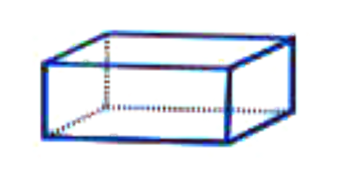 View Solution
View SolutionVolume And Capacity|Volume Of Cuboid |Volume Of Cube|Volume Of Cylinder|Volume Of Cone|Volume Of Sphere|Volume Of Hemisphere|NCERT Example
View SolutionThe volume of a cuboid whose sides are in the ratio 1:2:4 is same as that of a cube. What is the ratio of the length of diagonal of the cuboid to that of the cube?
View SolutionVolume And Capacity|Volume Of Cuboid|Volume Of Cube|Volume Of Cylinder|Volume Of Cone|Volume Of Sphere|Practice Problems
View SolutionThe volume of a cube with diagonal d is ________.
View SolutionIn Figure, name the four diagonals of the cuboid.
View Solution

